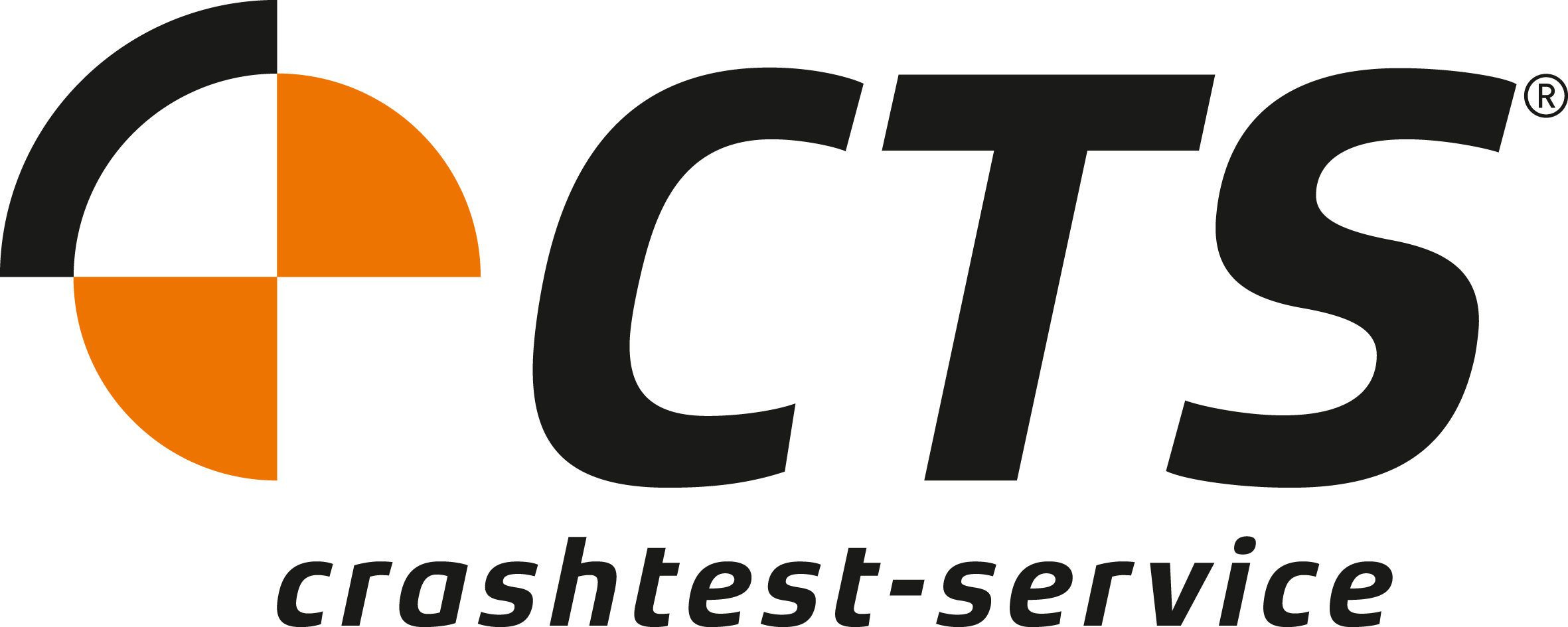Standard crash tests
Tests according to standardized impact tests
As an accredited testing laboratory, we conduct standard-compliant crash tests – specifically for Hostile Vehicle Mitigation, HVM. These include:
- Testing of road restraint systems
DIN EN 1317-1 (2011-01) - Road restraint systems – Part 1: Terminology and general criteria for test methods
DIN EN 1317-2 (2011-01) - Road restraint systems – Part 2: Performance classes, impact test acceptance criteria and test methods for safety barriers including vehicle parapets
DIN EN 1317-3 (2011-01) - Road restraint systems – Part 3: Performance classes, impact test acceptance criteria and test methods for crash cushions
DIN CEN/TS 1317-7 (2024-04) - Road restraint systems - Part 7: Performance characterisation and test methods for terminals of safety barriers
DIN CEN/TS 1317-9 (2024-04) - Road restraint systems - Part 9: Impact tests and test methods for removable barrier sections
DIN CEN/TS 1317-10:2023 - Road restraint systems - Part 10: Assessment methods and design guidelines for transitions, terminal and crasg cushion connections - transitions
DIN CEN/TS 16786 (2018-06) - Restraint systems on roads - Transport vehicle-supported mobile impact retarders (TMA) - Performance classes, acceptance criteria for impact tests and test performance
MASH (2016) - Manual for Assessing Safety Hardware Second Edition only: Longitudinal Barriers, Terminals and Crash Cushions, Truck- and Trailer-Mounted Attenuators and Variable Message Sign and Arrow Board Trailers
- Testing of support structures for road equipment
DIN EN 12767 (2019-10) - Passive safety of support structures for road equipment – Requirements, classification and test methods
MASH (2016) - Manual for Assessing Safety Hardware Second Editiononly: Support Structures, Work-Zone Traffic Control Devices, Breakaway Utility Poles, and Longitudinal Channelizers
- Testing of vehicle security barrier systems
ASTM F2656/F2656M - 23 (2023) - Standard Test Method for Crash Testing of Vehicle Security Barriers
DIN SPEC 91414-1 (2021-04) - Mobile Fahrzeugsicherheitsbarrieren für Sicherheitsanforderungen - Teil 1: Anforderungen, Prüfmethoden und Leistungskriterien
ISO 22343-1 “Security and resilience - Vehicle security barriers - Part 1: Performance requirement, vehicle impact test method and performance rating”
Technical Guideline (TR) (2019-06) – Mobile Vehicle Security Barriers (version 0.8)
Note: ISO 22343-1 has replaced IWA 14-1 since 2023 and PAS 68 was also withdrawn in 2023.
- Testing of safety equipment for construction sites
Technische Lieferbedingungen für Leit- und Warnbaken (1997) - Kapitel 4.1 Prüfung der Folien ausgeschlossen
The requirements of a test laboratory correspond in accordance with Article 43 of the Construction Products Regulation for the EN 1317 test methods. In addition, our accreditation by the DAkkS is internationally valid, since the German accreditation body is a member of the International Laboratory Accreditation Cooperation (ILAC).
Flexible accreditation
Due to the flexible category B accreditation, we can use the free choice of standardized test methods or those that are equivalent to them within the test areas specified above and without requiring prior information and approval from the DAkkS (except EN 1317).
Possible test procedures:
CEN/TS 17342:2019 Road restraint systems - Motorcycle road restraint systems which reduce the impact severity of motorcyclist collisions with safety barriers
ASTM F 3016/F 3016M:2019 - Standard Test Method for Surrogate Testing of Vehicle Impact Protective Devices at Low Speeds
BASt - Sonderlösungen von Schutzeinrichtungen in Einmündungsbereichen (Version 03 vom 23.07.2021)
AS/NZS 3845.2:2017 - Road safety barrier systems and devices Part 2: Road safety devices
BSI PAS 170-1 - Impact testing for vehicle safety barriers - Low speed impact testing Part 1: Test method for bollards using ramming trucks
Withdrawn test procedures:
NCHRP Report 350 - National Cooperative Highway Research Program
MASH 2009 - Manual for Assessing Safety Hardware
Manual for the evaluation of safety devices
ASTM F 2656-07 – Test Methods for Impact Testing of Vehicle Safety Barriers (Formerly P1, P2, P3, P4 Rating)
ASTM F2556/F2656M – 15 - Test Methods for Impact Testing of vehicle safety barriers (formerly P1, P2, P3 rating)
ASTM F2656/F2656M – 18 - Test Methods for Impact Testing of Vehicle Safety Barriers (Formerly P1, P2, P3 Rating)
ASTM F2656/F2656M – 18a - Test Methods for Impact Testing of Vehicle Safety Barriers (Formerly P1, P2, P3 Rating)
ASTM F2656/F2656M – 20 - Test Methods for Impact Testing of Vehicle Safety Barriers (Formerly P1, P2, P3 Rating)
CEN CWA 16221:2010 – Vehicle security barriers. Performance requirements, test methods and guidance on application
DoS SD-STD-02.01 – … (Formerly K4, K8, K12 Rating)
IWA 14-1:2013 – Vehicle security barriers - Part 1: Performance requirement, vehicle impact test method and performance rating
PAS 68:2013 – Impact test specifications for vehicle security barrier systems
DIN V ENV 1317-4 (2002-04) - Road restraint systems –Part 4: Performance classes, impact test acceptance criteria and test methods for terminals and transitions of safety barriers
Fast and flexible
Our large, easily accessible crash test facility, which can be converted in a very short time, offers the highest spatial and technical flexibility. On the new asphalt surface, construction lengths of up to 170 m are now possible, both for transportable systems and for systems attached to asphalt or concrete foundations.

Clear processing of audit reports
- Extensive written and digital documentation of the results
- Multimedia presentation comprehensible for all target groups
- Direct further use for the corresponding certification and approval processes
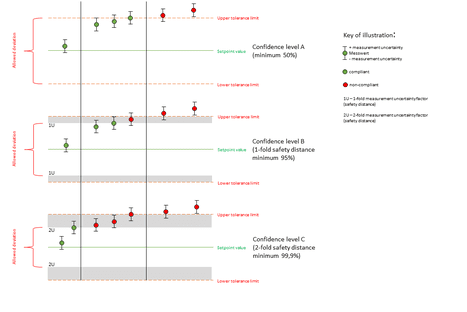
With regard to compliance statements in test reports, the following decision rules have been defined:
As a rule, a low confidence level (A) is assumed, which increases the acceptance range, so that measurement results with a confidence level of at least 50% are also accepted.
After prior agreement, the customer can also specify a medium confidence level (B), which reduces the acceptance range so that measurement results with a confidence level of at least 95% are also accepted with a maximum residual risk of 5%.
A high confidence level (C), which corresponds to a confidence level of at least 99.9%, is not acceptable at the CTS test laboratory and is therefore not applicable.
The confidence level you set (A or B) will be communicated to you via the offer and the test report.
If a decision rule is included in the applicable rule set/assessment procedure or is specified by the customer, such rules shall take precedence over our general decision rule (confidence level A).
Customized constructive special solutions
- Push-pull tests
- Exchangeable bottoms
- Slopes
- Strip foundations
For your project
We are well equipped for your project
Construction machinery:
- Forklift
- Excavator
- cherry picker
- Vibratory feeder
Equipment / Service:
- Livestreams directly from the crash test facility
- Office container as workplace directly on the crash site
- State-of-the-art meeting rooms
- Catering for you and your customers
- Area-wide W-Lan on the crash test site
News
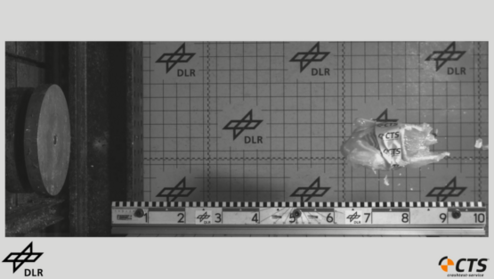
Bird dummy for aviation: chickens no longer have to die for this
The company CTS Crashtest-Service from Münster has invented an artificial chicken. It is used in bird strike experiments - to protect life.
By Andrea Walter
It looks and feels like a chicken about to end up in a cooking pot: a bit soft, without feathers, a plastic skeleton shimmers through the silicone. Peter Schimmelpfennig and Mirko Dobberstein from CTS Crashtest Service worked on this artificial bird for a long time. It must be lifelike to be approved for bird strike experiments. That's why every chicken produced here has the same weight: 1.8 kilograms, that's the rule.
Real chickens for bird strike experiments
What hardly anyone knows: To this day, real chickens are used in the aviation industry for the prescribed bird strike tests, for example on engines. They are killed just before the attempt but must not be dead for more than 40 minutes or rigor mortis sets in and that would falsify the attempt.
...
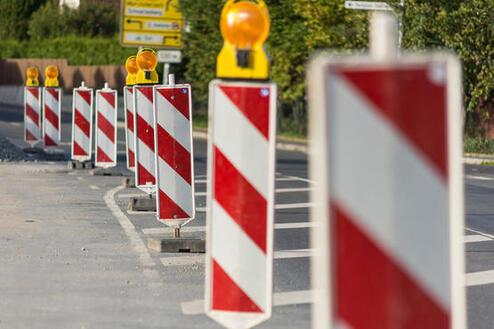
New test procedures for TL guidance beacons and TL guidance elements
According to the general circular "Straßenbau Nr. 23/2022 vom 14. Dezember 2022 des Bundesministeriums für Digitales und Verkehr aus dem Sachgebiet 07.3", it is possible for CTS to carry out tests according to the TL-Leitbaken and TL-Leitlemente for a transitional period until 31 December 2025. This is based on the already existing accreditation according to EN 1317 and EN 12767 until the testing procedure with the complete range of services is included in our scope.
You can find ARS 23/2022 at: https://www.fgsv-verlag.de/pub/media/pdf/ARS_23_2022_vom_14122022.pdf
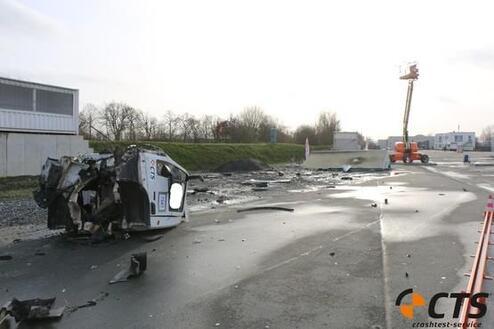
CTS updates the VSB-List
The updated CTS Vehicle Security Barrier List (VSB_List) is now available for download.
The VSB List provides information about vehicle security barriers that have been successfully tested by us and serves as a basis for your decision, to find the right product for your needs and application. DIN SPEC 91414-1 has been added as a new test method.
Already now you can look forward to the next update, where several barriers from India, Netherlands, Ukraine, Turkey and Germany will be added.
Your contact persons
Book your crash appointment easily online!
We look forward to hearing from you.
Let us know your preferred date and your requirements. The CTS team will contact you as soon as possible.
